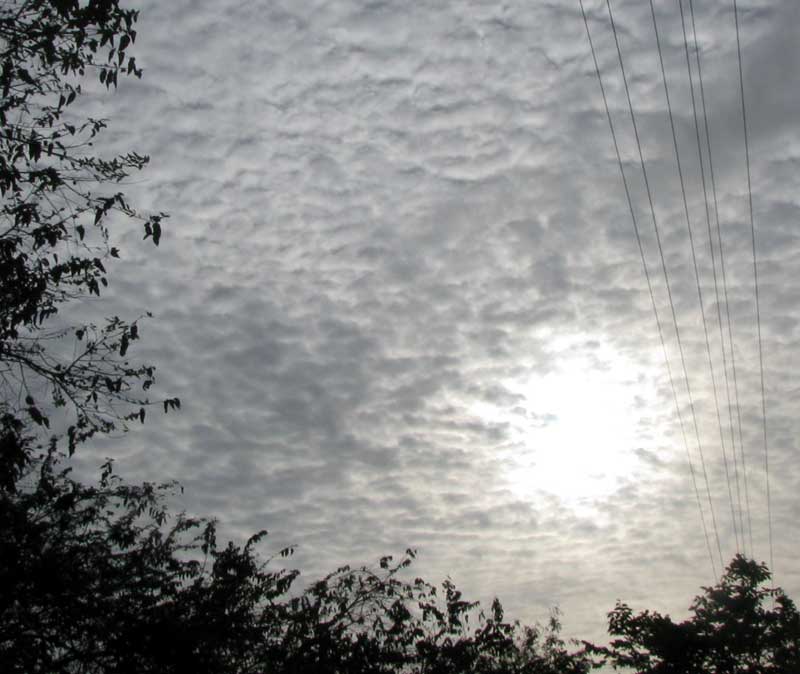Excerpts from Jim Conrad's
Naturalist Newsletter

from the March 20, 2011 Newsletter issued from Hacienda Chichen Resort beside Chichén Itzá Ruins, central Yucatán, MÉXICO; limestone bedrock, elevation ~39m (~128ft), ~N20.676°, ~W88.569°
STRATUS BECOMING STRATOCUMULUS
For some reason lately I've been especially sensitive to clouds. As a melody's tones express the complex disposition of a composer's mind, clouds state the sky's mood -- especially its moisture content, temperature and turbulence. What a pleasure to watch the sky's temperament change through the day, and from season to season. Early one morning this week I snapped the somber clouding shown at the top of this page.
Remembering that stratus clouds are blanket-like cloud layers and that cumulus clouds are white, puffy ones typical of summery clouds, I wondered whether this might qualify as "stratocumulus." On the Internet I read that stratocumulus clouds exhibit themselves as a layer of individual rolls or rounded masses. Someone writes that if you hold your hand at arm's length the individual cloud elements appear to be about the size of your fist. Stratocumulus clouds generally are composed of small water droplets, not ice.
What's shown in the picture is too lumpy to be stratus yet the individual cloud elements are much smaller than a hand at arm's length, and aren't nearly as distinct and well formed as those seen in photographs of "classic stratocumulus."
Thus I'm calling what's in the picture "stratus becoming stratocumulus," and in so doing I feel glad that clouds, too, are like living organisms, in that they seldom neatly fit into the mental pigeonholes we humans obsessively create for them.
Such cloud cover often forms these days soon after dawn. Often when I run at 4AM the sky is clear with twinkling stars, but as dawn approaches a haze forms and by the time it's halfway light the sky is blanketed with gray stratus. After an hour or two the stratus curdles into the condition shown in the picture, then the entire cloud cover starts breaking up with more and more blueness showing, and then by 9 or 10AM you have a cloudless blue sky.
Sometimes earlier in the year you could watch a morning's fog as the first light dawned gradually lift from the ground and become very low stratus or breaking-up stratus, then you'd get a covering more or less like in the picture, and then again by 9 or 10AM you'd have a cloudless sky.